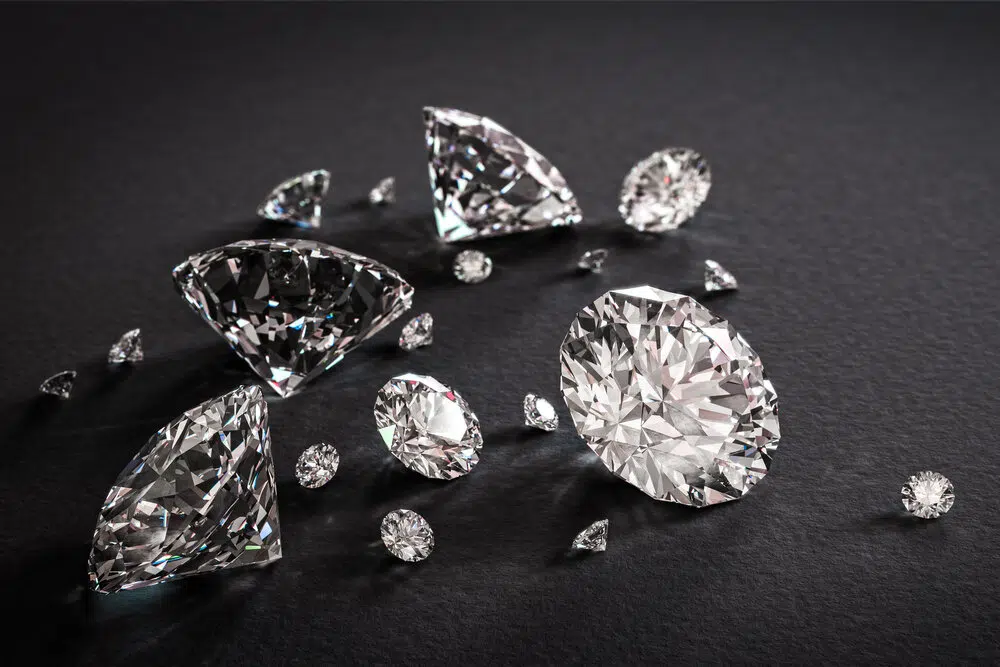
Laboratory diamonds, often referred to as synthetic or cultured diamonds, have gained significant popularity in recent years due to their ethical sourcing and environmental benefits. Understanding the Composicion de diamantes de laboratorio is crucial for both consumers and investors as it sheds light on their properties, formation processes, and how they compare to natural diamonds.
The Chemical Makeup of Laboratory Diamonds
Laboratory diamonds are composed primarily of carbon atoms, just like natural diamonds. In fact, both types of diamonds share the same crystalline structure, which gives them their remarkable hardness and brilliance. Laboratory diamonds are created using two primary methods: High Pressure High Temperature (HPHT) and Chemical Vapor Deposition (CVD). Regardless of the method used, the fundamental composition remains consistent, ensuring that laboratory diamonds possess similar physical and chemical properties to their natural counterparts.
Formation Processes of Laboratory Diamonds
The formation of laboratory diamonds differs significantly from that of natural diamonds, which take millions of years to develop deep within the Earth’s mantle. In contrast, laboratory diamonds can be created in a matter of weeks or months through advanced technological processes. The HPHT method mimics the extreme pressure and temperature conditions found in the Earth’s mantle, while the CVD method involves the deposition of carbon gases onto a substrate, gradually forming a diamond crystal. Despite these different methods, the composition of laboratory diamonds remains carbon-based, ensuring their authenticity.
Physical Properties of Laboratory Diamonds
Laboratory diamonds exhibit the same physical properties as natural diamonds, including hardness, thermal conductivity, and optical characteristics. They score a perfect 10 on the Mohs hardness scale, making them the hardest known natural material. Additionally, laboratory diamonds demonstrate excellent thermal conductivity, which is a key reason for their use in various industrial applications. Their optical properties, including refractive index and dispersion, also match those of natural diamonds, giving laboratory diamonds a comparable sparkle and brilliance.
Purity and Clarity of Laboratory Diamonds
The purity and clarity of laboratory diamonds can vary, just like with natural diamonds. While many laboratory diamonds are produced to be flawless or of high clarity, the presence of trace elements can affect their overall quality. Common impurities in laboratory diamonds include nitrogen, which can influence color, and boron, which can give diamonds a blue hue. However, laboratory diamonds are often created in controlled environments, allowing for better management of impurities, leading to a higher likelihood of achieving a desirable clarity grade.
Color Variations in Laboratory Diamonds
Laboratory diamonds can exhibit a range of colors, from colorless to shades of yellow, brown, blue, and even pink. The color in laboratory diamonds is influenced by the presence of certain impurities or the conditions under which they are created. For instance, yellow and brown diamonds typically result from nitrogen incorporation during the growth process. Conversely, blue diamonds are often formed when boron is present. The ability to control these color variations in laboratory diamonds provides consumers with more options and customization possibilities.
The Ethical and Environmental Impact of Laboratory Diamonds
One of the key reasons for the increasing popularity of laboratory lab made diamonds is their ethical and environmental advantages. Unlike natural diamonds, which can be associated with conflict and environmental degradation, laboratory diamonds are created in controlled environments with minimal environmental impact. Their composition and production methods also contribute to a lower carbon footprint, appealing to environmentally-conscious consumers. By choosing laboratory diamonds, individuals can make a responsible investment without compromising on quality or aesthetics.
Conclusion: The Future of Laboratory Diamonds
In conclusion, laboratory diamonds offer an exciting alternative to natural diamonds, boasting the same chemical composition and physical properties. Their unique formation processes, purity levels, and ethical advantages make them an attractive choice for consumers and investors alike. As technology continues to advance, the production of laboratory diamonds will likely become more refined, leading to an even greater appreciation for their brilliance and beauty. Understanding the composition of laboratory diamonds is essential for making informed decisions in today’s evolving market.
